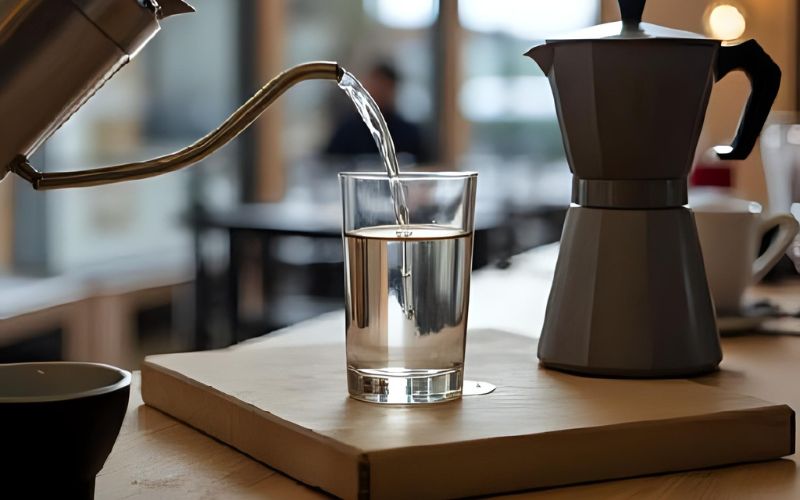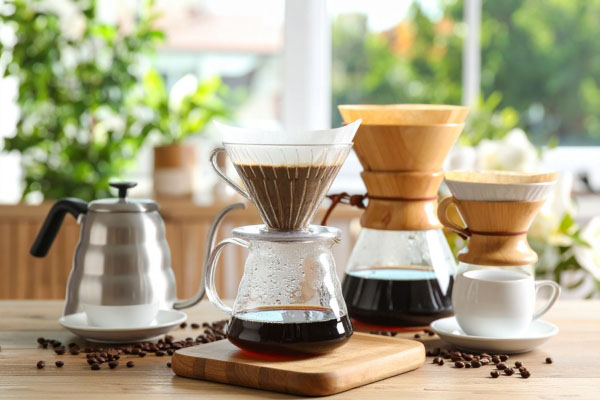
Water for Coffee: The Ultimate Guide
Did you know that water makes up 98% of your coffee? This guide explores the crucial role that water plays in coffee extraction and why using the right water is essential for a delicious cup.
The Most Important, Overlooked Ingredient
You can have the best coffee beans in the world, a top-of-the-line grinder, and a perfect brewing technique, but if you use bad water, you will make bad coffee. It's a simple fact that is often overlooked: water makes up over 98% of a standard cup of filter coffee. The quality and composition of your water is therefore one of the most critical factors in brewing a delicious cup.
Coffee brewing is a process of extraction. The water acts as a solvent, dissolving the various flavor compounds (sugars, acids, oils, etc.) from the ground coffee beans. The mineral content of the water is what allows this to happen effectively.
The Goldilocks Zone: Not Too Hard, Not Too Soft
The ideal water for coffee is not pure H2O. It needs some mineral content to properly extract flavor. The two most important minerals are magnesium and calcium.
- Magnesium is great at bonding to and pulling out the sweet, fruity, and floral flavor compounds from coffee.
- Calcium tends to accentuate the rich, creamy, and chocolatey notes.
This is why water is often described in terms of its "hardness" or "softness."
- Hard Water: Water with a very high mineral content. Using water that is too hard can lead to over-extraction, resulting in a coffee that tastes harsh, chalky, and bitter. It can also cause a rapid buildup of scale (limescale) in your coffee equipment.
- Soft Water: Water with a very low mineral content. Using water that is too soft (like distilled water) will lead to under-extraction. The water lacks the necessary "grabbing power" to pull the flavor from the beans, resulting in a coffee that tastes thin, sour, and lifeless.
The Specialty Coffee Association (SCA) has set a target for the ideal water mineral content, which is around 150 parts per million (ppm). This is the "Goldilocks zone"—just right for a balanced and flavorful extraction.
Choosing Your Water Source
So, what water should you use at home?
-
Tap Water: The quality of tap water varies dramatically by location. In some places, it might be perfect for brewing. In many others, it might be too hard or contain other elements like chlorine that can negatively impact flavor. If your tap water tastes good on its own, it might be fine for coffee. But if you notice scale buildup in your kettle, your water is likely too hard.
-
Standard Filtered Water (e.g., Brita or Soma): This is a great starting point for most people. These carbon filters are effective at removing chlorine and other off-tastes from tap water, and they can slightly reduce the overall hardness. For many households, this is the most practical and effective solution.
-
Distilled or Reverse Osmosis (RO) Water: This is water that has had all or nearly all of its mineral content removed. As discussed, you should not use pure distilled water to brew coffee. However, it can be used as a clean base to build your own perfect coffee water. Advanced coffee enthusiasts often buy distilled water and add specific mineral packets (from brands like Third Wave Water or Aquacode) to create the exact SCA-ideal mineral composition.
-
Spring Water: Bottled spring water can be a good option, but its mineral content can vary wildly from brand to brand. Check the label for the Total Dissolved Solids (TDS), which is a measure of its mineral content. Look for a TDS in the range of 100-200 ppm for best results.
For most home brewers, a simple carbon filter pitcher will make a significant improvement in your coffee's taste. But if you want to take a deeper dive, exploring different waters can be a fascinating way to see how this single ingredient can unlock a whole new world of flavor in your favorite beans.


